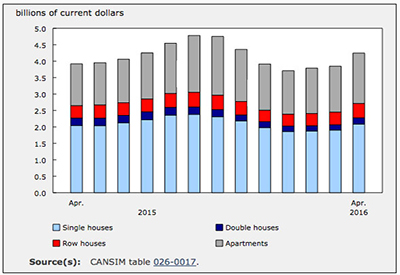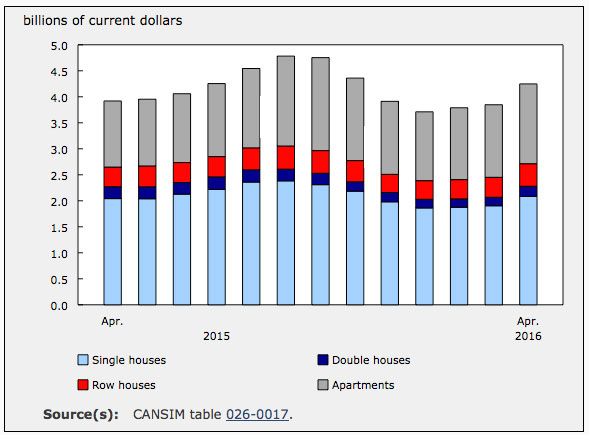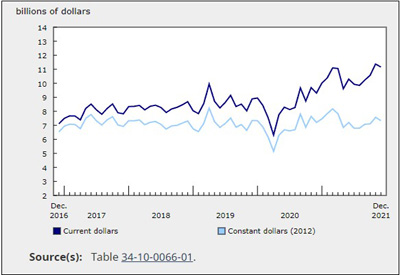April New Housing Construction Spending Up 8.4% YOY

July 5, 2016
Spending on new residential construction totalled $4.2 billion in April, up 8.4% from the same month a year earlier. Nationally, the increase was driven by higher investment in apartment and apartment-condominium buildings, which rose 20.8% to $1.5 billion. Higher spending on row houses (up 14.2% to $433 million) and single-family dwellings (up 2.1% to $2.1 billion) also contributed to the advance.
Chart 1: Investment in new housing construction, by type of dwelling
In contrast, investment in semi-detached dwellings declined year over year for the 12th consecutive month, down 14.7% to $195 million in April.
At the provincial level, five provinces recorded advances in new housing construction spending. Ontario led, followed by British Columbia and Quebec.
In Ontario, investment in new residential construction increased 32.7% year over year to $1.7 billion in April, largely the result of higher investment in single-family homes. All dwelling types recorded higher construction spending, except semi-detached buildings, which posted a 14th consecutive monthly year-over-year decline.
In British Columbia, spending on new housing construction rose 28.3% year over year to $945 million in April. Higher investment in apartment and apartment-condominium buildings contributed the most to the gain, followed by single-family dwellings and row houses. Investment in semi-detached dwellings declined for the 10th consecutive month.
In Quebec, investment in new residential construction totalled $590 million in April, up 5.8% compared with April 2015. Higher spending on apartment and apartment-condominium buildings more than offset declines in single-family and semi-detached dwellings.
Spending on new housing construction decreased in five provinces in April, with Alberta registering the largest decline, followed by Saskatchewan and Manitoba. In Alberta, decreased investment occurred in all dwelling types, although the decline was mainly attributable to lower spending on single-family dwellings.
Source: Statistics Canada, www.statcan.gc.ca/daily-quotidien/160621/dq160621a-eng.htm.












